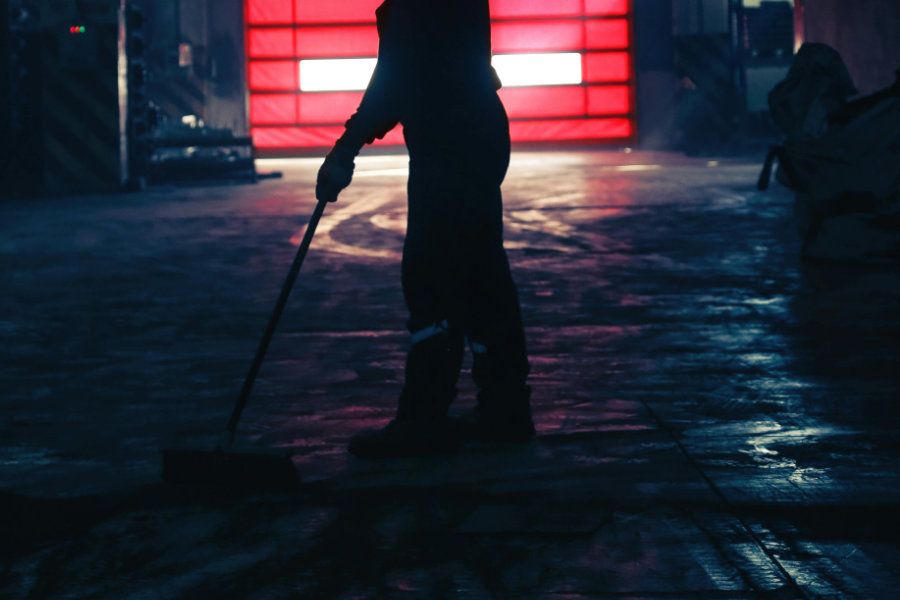In commercial and industrial environments, cleaning is a recurring and necessary expense. From labour to equipment and consumables, the costs can accumulate quickly. With the rise of robotic cleaning systems, many facility managers are now questioning whether automation could be a smarter long-term investment.
This post breaks down the real costs behind both methods and explains when it makes sense to transition from manual to robotic cleaning.
Traditional Cleaning: What Are You Really Paying For?

Manual cleaning may seem straightforward, but it comes with several ongoing expenses. These include:
- Labour costs: Wages, insurance, training and supervision make up a significant portion of a cleaning budget.
- Equipment wear and tear: Vacuums, mops and scrubbers require frequent replacement or maintenance.
- Consumables: Chemicals, mop heads and disposable wipes increase supply costs over time.
- Inconsistency: Human error, fatigue and shift variation can affect the quality of cleaning.
While this method can be effective with a skilled team, it often becomes inefficient in large-scale operations where consistency and speed are critical.
Robotic Cleaning: A Long-Term Efficiency Strategy

Although commercial & industrial robotic cleaners typically require a higher initial investment, they are designed to reduce operational costs over time. These machines work autonomously, using advanced mapping and navigation to follow consistent cleaning paths with minimal oversight.
Key cost advantages include:
- Reduced labour reliance
- Lower consumable usage
- Fewer human errors
- Scheduled cleaning outside peak hours
- Longer operating hours without fatigue
Over time, these factors contribute to a lower cost per square metre compared to traditional methods.
Comparing Key Cost Factors
| Cost Area | Traditional Cleaning | Robotic Cleaning |
|---|---|---|
| Labour | High | Low |
| Equipment | Moderate | Higher upfront, lower ongoing |
| Consumables | High | Lower |
| Maintenance | Ongoing | Predictable and minimal |
| Coverage Consistency | Variable | Reliable |
| Operating Efficiency | Staff dependent | Automated and optimised |
Operational Advantages of Robotic Cleaning
Robotic cleaning machines do more than reduce costs. They introduce a new level of efficiency to facility management:

- Consistent daily results
- Quiet operation suitable for office or public use
- Remote monitoring and performance reporting
- Coverage of large or complex areas without missed spots
This reliability allows cleaning teams to focus on higher-value tasks such as deep cleaning or sanitation in sensitive zones.
Sustainability and Resource Use

Robotic systems are also designed to support sustainability goals. Many use less water and energy than traditional equipment. Reusable filters and smart path planning reduce chemical and resource consumption, while efficient battery systems cut down on electricity usage.
For organisations pursuing environmental targets, this can be a valuable added benefit.
Practical Limitations to Keep in Mind
Despite their advantages, robotic systems are not ideal for every scenario. Limitations may include:
- Difficulty navigating cluttered areas or uneven surfaces
- Limited capacity for deep cleaning or spot removal
- Need for periodic emptying, cleaning and maintenance
- Initial learning curve for setup and staff adaptation
For most commercial operations, these machines are best used alongside human staff as part of an integrated cleaning strategy.
Making the Right Investment
Whether robotic cleaning is the right choice depends on your facility’s size, layout and cleaning requirements. Large buildings with predictable layouts and high labour costs benefit most from automation. Meanwhile, smaller sites with complex environments may still rely heavily on manual methods.
Floorbotics helps address these challenges through navigation map settings and performance monitoring features that ensure robots clean consistently every day. If you would like guidance on setup or optimising your cleaning maps, please contact the Floorbotics support team, and our business team will be in touch within 24 hours.

